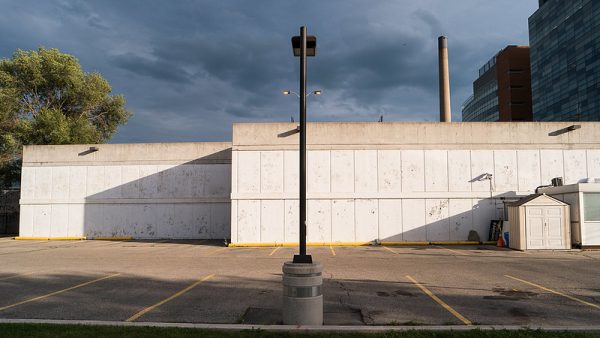From my living room window, I can see a church parking lot. Services are now streamed so it no longer fills up on Sunday mornings but, in this time of physical distancing, the parking lot has become a of site of other activities.
First came the drummer. A persistent patter on a Saturday afternoon. Too late in the day for a woodpecker. Too early for raccoons. With fewer passing cars, the streets are quieter and I’ve started picking out the sounds of nonhuman neighbours. But this was a new noise.
In the parking lot, a man leaned against a car playing a snare drum. He hadn’t simply popped down from one of the surrounding buildings to give his neighbours a break, he had driven to the parking lot, seeking out a space to make music.
Arts centres are closed, concerts are cancelled. As anyone who took part in an online Seder this year learned, video calls don’t allow for the syncing of many voices in song. So instead, a Saturday afternoon was given a symphonic flourish by a drum solo cut off from the collective efforts of a marching band or a percussion section by physical distancing.
The day after the drummer’s visit, the parking lot filled with a family unloading scooters, skateboards, rollerblades and helmets from a car. Kids raced to the far fence and parents took turns riding a scooter whose handlebars barely reached their knees.
On March 30, the province closed all outdoor recreational amenities to stop the spread of COVID-19. Across Toronto, benches are wrapped in caution tape and swing sets are tied in knots. Community gardens are closed and dog parks are locked. Parks and trails that remain open permit “walkthrough access” only.
In the absence of picnic tables and playgrounds, parking lots offer an opportunity for spontaneity. Schoolyards are covered with warning signs and tennis courts are chained shut but parking stalls offer an approximation of a four square court and a level surface to serve a ball back and forth.
The yellow lines that guide drivers are also a physical distancing tool. A few Saturdays after I first noticed the drummer, he was joined by a friend. They played snare drums together while standing in separate parking spots.
My local parking lot shows that people are still craving ways to stay active and get creative. Especially in a time of uncertainty, city dwellers are looking for new ways break a sweat or make some noise.
Toronto doesn’t need more surface parking. These treeless wastelands are a symptom of car culture and a threat to climate change adaptation. When they’re full of cars, parking lots are a hazard to cross by foot. When rain pools across pavement, parking lots are a storm water management nightmare. When the sun shines, parking lots absorb heat and raise the temperature of the surrounding neighbourhood. As cities around the world prepare for a changing climate, there is little to recommend this land use.
In recent years, Toronto’s high land values made surface parking more and more uncommon. Between 1978 and 2019, 40% of downtown surface parking was redeveloped and, as new buildings go up, parking is more likely to be pushed underground.
But in our current moment of physical distancing, these environmentally irresponsible anachronisms offer a silver lining. With parks and other outdoor spaces off limits, empty parking lots become a blank canvas for friends committed to remaining two metres apart or households looking for an alternative to climbing up the walls.
As we begin to imagine post pandemic recovery, surface parking offers some hints at what our public spaces might look like. Parking lots enable unexpected activities by people of all ages. Kids need to race and friends want to jam and seniors wish to measure their steps. The popularity of parking lots during the pandemic is proof that sometimes the most successful places are the least planned.
Public spaces that invite unintended uses allow residents to decide how best to animate their neighbourhoods. When we are once again allowed to gather, we’ll be sick of rules and ready to reinvent the spaces we share. Creating outdoor opportunities that welcome everyone after COVID-19 will require marching to the beat of a different drum; it’s our choice whether we listen and learn from the pandemic’s rhythm.
Photo by Ryan Raz




